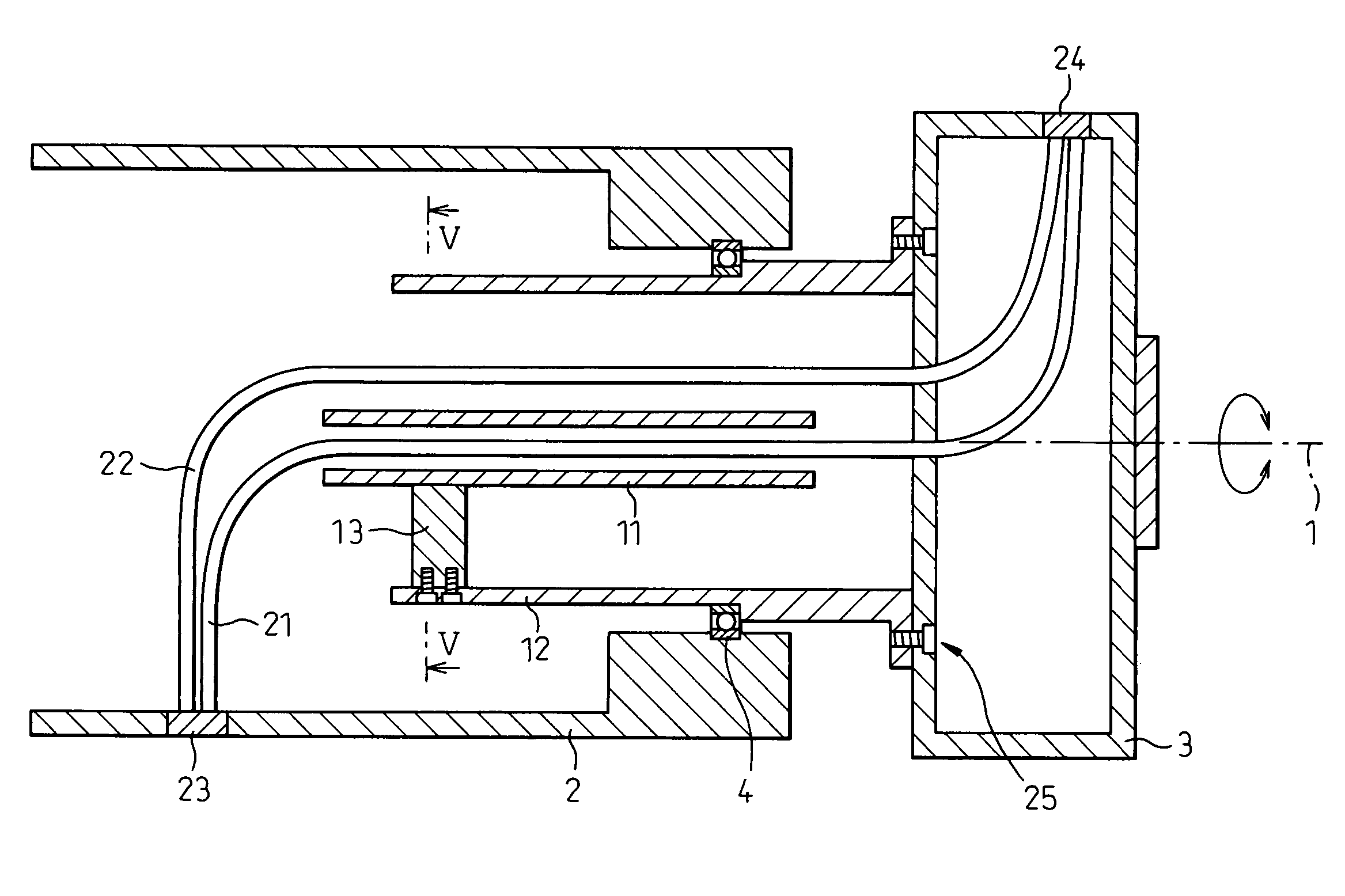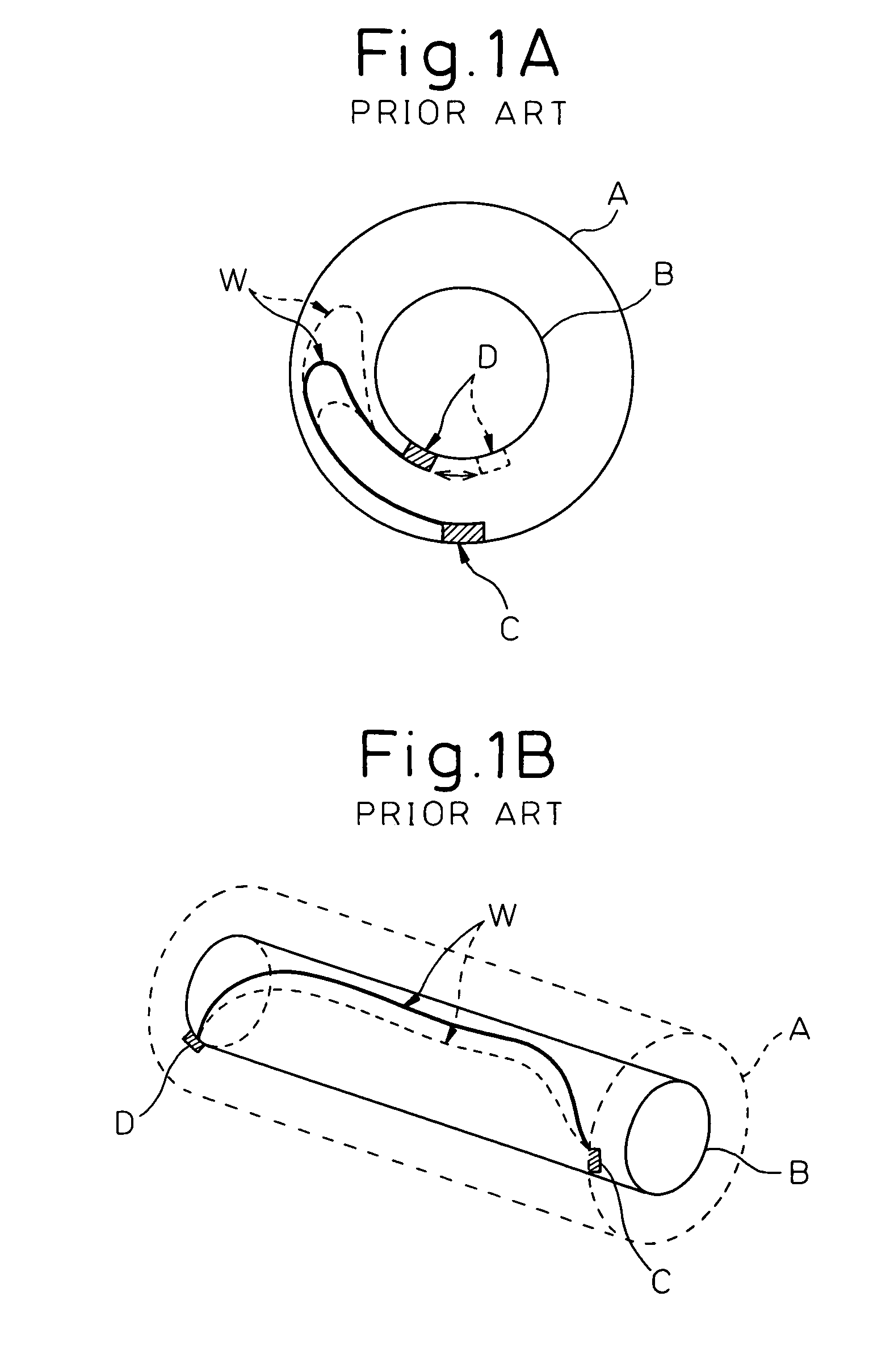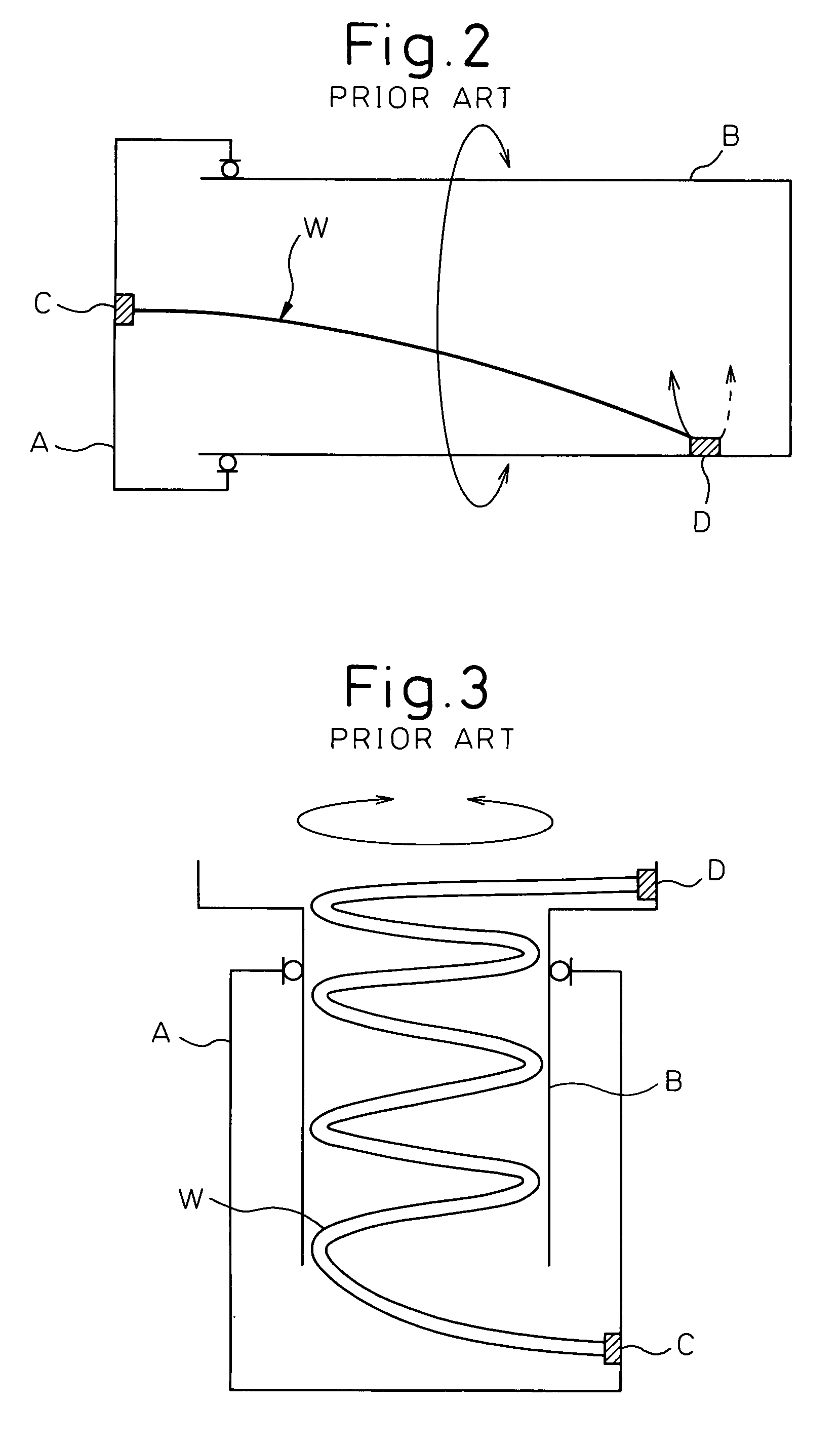Device for laying line elements
a technology of laying device and laying line, which is applied in the direction of cable arrangement between relatively moving parts, machine supports, manufacturing tools, etc., can solve the problems of large cable load, shorten the life of the cable w, and increase the diameter of the cable, so as to achieve the effect of convenient application
- Summary
- Abstract
- Description
- Claims
- Application Information
AI Technical Summary
Benefits of technology
Problems solved by technology
Method used
Image
Examples
Embodiment Construction
[0032]With reference to the drawings, several embodiments of the present invention will be described below.
[0033]Firstly, FIGS. 4 and 5 are referred to. A structure shown in FIG. 4, which is used, for example, in a wrist portion of a robot, includes a hollow disk-like member (first member) constituting a moving housing 3, and a hollow cylindrical member (second member) constituting a stationary housing 2.
[0034]A pipe member 12 having a center axis 1 is attached to the moving housing 3 by fasteners 25 such as bolts and is rotatably supported in the cylindrical stationary housing 2 by means of bearings 4. Thus, the pipe member 12 and the moving housing 3 are supported by the stationary housing 2 so as to be rotatable about the center axis 1.
[0035]As shown in FIG. 5, another pipe member 11 is disposed inside the pipe member 12 in a generally coaxial relationship with the pipe member 12, and these pipe members 11 and 12 are coupled at parts thereof to each other by means of a coupling m...
PUM
 Login to View More
Login to View More Abstract
Description
Claims
Application Information
 Login to View More
Login to View More - R&D
- Intellectual Property
- Life Sciences
- Materials
- Tech Scout
- Unparalleled Data Quality
- Higher Quality Content
- 60% Fewer Hallucinations
Browse by: Latest US Patents, China's latest patents, Technical Efficacy Thesaurus, Application Domain, Technology Topic, Popular Technical Reports.
© 2025 PatSnap. All rights reserved.Legal|Privacy policy|Modern Slavery Act Transparency Statement|Sitemap|About US| Contact US: help@patsnap.com



